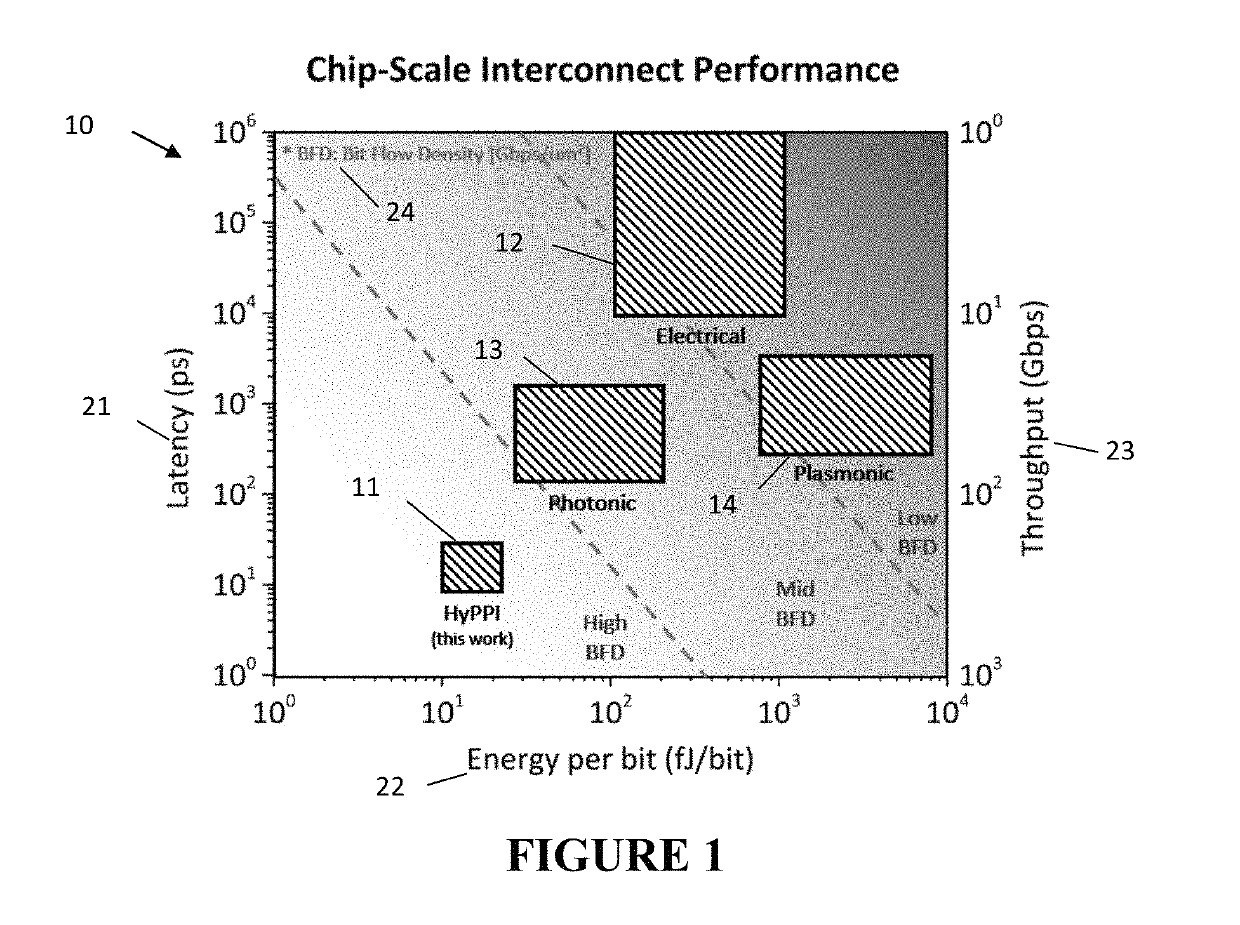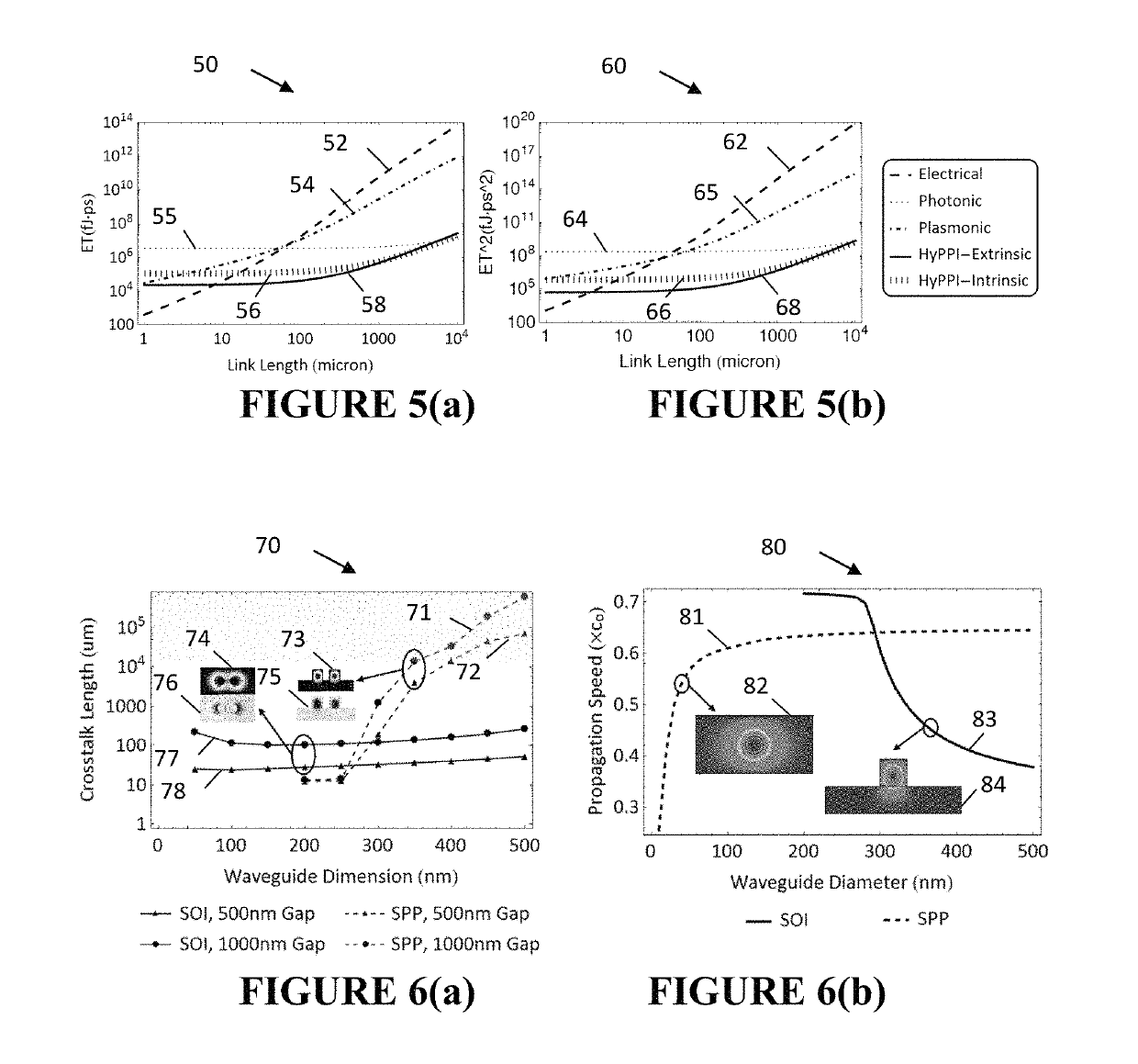Hybrid photonic plasmonic interconnects (HyPPI) with intrinsic and extrinsic modulation options
a technology of photonic plasmonic interconnects and modulation options, which is applied in the field of photonic silicon-based waveguides, can solve the problems of easy melting of chips, no longer staying the physical properties of semiconductor materials, and severe limitations of on-chip communication interconnects, and achieves the effects of high operating frequency, reduced footprint, and improved interconnection performan
- Summary
- Abstract
- Description
- Claims
- Application Information
AI Technical Summary
Benefits of technology
Problems solved by technology
Method used
Image
Examples
Embodiment Construction
[0024]In describing a preferred embodiment of the invention illustrated in the drawings, specific terminology will be resorted to for the sake of clarity. However, the invention is not intended to be limited to the specific terms so selected, and it is to be understood that each specific term includes all technical equivalents that operate in similar manner to accomplish a similar purpose. Several preferred embodiments of the invention are described for illustrative purposes, it being understood that the invention may be embodied in other forms not specifically shown in the drawings.
[0025]FIG. 1 is a representation of the improvement to latency 21, energy efficiency 22, throughput 23 and bit flow density 24 for the present invention. As shown, the HyPPI solution of the current invention 11 provides reduced latency and reduced energy consumption over traditional electrical 12, plasmonic 14 and photonic 13 solutions, while at the same time providing increased throughput and bit flow d...
PUM
 Login to View More
Login to View More Abstract
Description
Claims
Application Information
 Login to View More
Login to View More - R&D
- Intellectual Property
- Life Sciences
- Materials
- Tech Scout
- Unparalleled Data Quality
- Higher Quality Content
- 60% Fewer Hallucinations
Browse by: Latest US Patents, China's latest patents, Technical Efficacy Thesaurus, Application Domain, Technology Topic, Popular Technical Reports.
© 2025 PatSnap. All rights reserved.Legal|Privacy policy|Modern Slavery Act Transparency Statement|Sitemap|About US| Contact US: help@patsnap.com



